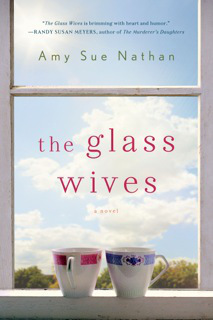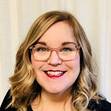Amy Sue Nathan's Blog: Women's Fiction Writers, page 30
June 30, 2014
Author Interview: Natalia Sylvester Says Always Be Willing To Listen, Learn, And Grow As A Writer
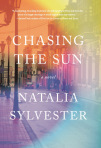 Happy July, friends! To kick off the month I’m excited to introduce Natalia Sylvester, whom I feel like I’ve known forever! Below, Natalia shares with us a wide range of wonderful thoughts—from her journey to publication, how the novel has impacted her family connections, what it’s like to write a novel set in another country. Natalia’s advice for writers is priceless: don’t forget to keep learning while you’re striving. Be willing. That’s the key. What an important reminder.
Happy July, friends! To kick off the month I’m excited to introduce Natalia Sylvester, whom I feel like I’ve known forever! Below, Natalia shares with us a wide range of wonderful thoughts—from her journey to publication, how the novel has impacted her family connections, what it’s like to write a novel set in another country. Natalia’s advice for writers is priceless: don’t forget to keep learning while you’re striving. Be willing. That’s the key. What an important reminder.
Please welcome Natalia Sylvester to Women’s Fiction Writers!
Amy xo
Debut Author Natalia Sylvester Says Always Be Willing To Listen, Learn, And Grow As A Writer
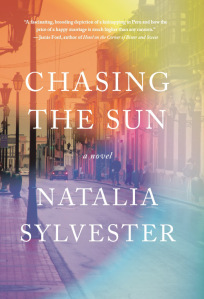 Amy: Welcome to WFW, Natalia! I feel like we’ve known each other forever and it’s exciting to share you and your debut novel, CHASING THE SUN, with WFW readers. Can you tell us a little about the book?
Amy: Welcome to WFW, Natalia! I feel like we’ve known each other forever and it’s exciting to share you and your debut novel, CHASING THE SUN, with WFW readers. Can you tell us a little about the book?
Natalia: Thanks so much for having me, Amy! It’s such a thrill to be here after following your blog for so long.
Chasing the Sun is the story of man whose wife is kidnapped in Lima, Peru, just as their marriage is falling apart, and how far he’ll go to save her. This traumatic event exposes all the hairline cracks in their relationship that Andres and Marabela have tried to conceal over the years, and now every choice he makes has consequences for him, his wife, his children, even his friends. Though the book was originally inspired by questions I had about my own grandfather’s kidnapping in Lima when I was too young to remember, the story and the characters quickly took on a life of their own.
Amy: CHASING THE SUN is traditionally published by New Harvest, which is an imprint of Amazon. For WFW readers who might be unfamiliar with this, can you explain a little about your journey to publication and how Amazon is a publisher–and how that differs from self-publishing on Amazon?
Natalia: Amazon Publishing launched in 2009 as a completely separate venture from their self-publishing arm. Like any house, they’re a traditional publisher and they acquire, publish, and distribute books through their many imprints (I think there are 14 total) in print, e-book, and audio formats. When my agent initially started shopping Chasing the Sun to publishers, New Harvest was one of the first on the list because she felt the story would be a good fit for one of their editors, and she was right! Because they’re a traditional publisher, the differences between publishing with them and self-publishing is very similar to the experience of authors at any other house. What I’ve most enjoyed is the support of my editors, the art team, and the publicity/marketing team. They’ve helped me polish the book and grow as a writer, they designed a cover that I’m absolutely in love with, and they’re getting the book into the hands of readers in ways I never could’ve imagined (or done on my own).
Amy: How has the publishing process surprised you?
Natalia: I think because I was so curious about the process even before I was in it, there were a lot of steps along the way that I already knew to expect. Things like getting an edit letter, seeing first pass pages, interior design pages, THE cover, getting ARCs in the mail—these are all things I’d read about as much as I could. But what was most surprising is that there’s a difference between learning about something on paper (or, online, in my case) and then actually experiencing it. It’s the difference between dreaming about something (which I did for so, so long) and then realizing you’re living in it, vividly. I don’t think anything could’ve prepared me for the bliss of these individual moments, when I had to keep reminding myself, this is actually happening. Take it in, be grateful for it, even when it’s a little scary.
Along those same lines, what’s also been surprising is that publishing a book is life-changing in some ways, but in others, it isn’t. Day-to-day my life is still very similar to what it was like before the book deal, and I think that’s a great thing, because if my happiness hinged on just this one accomplishment, how would I feel during the in-between moments, when it’s not all book launch fun and excitement?
Amy: Without giving us any spoilers, what was one of the hardest scenes in the book for you to write?
Natalia: There’s a moment in which Andres, having learned about an old friend who was also once kidnapped, goes to visit her in the rehab facility she’s been staying in to cope with her trauma. I knew it would be emotionally intense because of what she’d been through, and because of what she and Andres once meant to one another. I remember feeling like I had to submerge myself into the depths of the greatest sadness I could imagine, while at the same time, pulling from my closest friendships in order to arrive at some semblance of hope. I felt very vulnerable that day. There are days when you can make things up and let your imagination go places and then come back to your life unscathed. But much of writing this book, because it made me confront parts of my family’s past that I’d always been afraid to ask about, left me feeling tender (for lack of a better word) from the hurt I had to explore. The challenge and what made it all worth it, is that in the end I also found hope.
Amy: Do you have any one particular moment since CHASING THE SUN launched that stands out in your mind above the rest?
Natalia: It is so hard to pick just one! I think definitely, both my launches in Texas and in my hometown of Miami are nights that I’ll always, always remember as two of the happiest in my life. The Miami launch especially was surreal—I read in the same store I’d had a chance to read my senior thesis in when I was an undergrad at the University of Miami, and the project I shared was the very, very first draft of Chasing the Sun. They even had me in the same room, eight years later, and the scene I’d read back then is the only scene that survived all the rewrites and revisions the book went through.
The one moment, though. I’m almost crying just thinking about it. That evening in Miami, at the start of my talk, I spoke briefly about the inspiration for the story. How my grandfather had been kidnapped one day as he was driving to meet up with my father, and how my father had described his experience to me, years later, in vivid detail. He’d known I was writing this story, and each time we spoke about it I’d asked him: are you okay talking about it? Is it okay that I ask? And my father had always said yes, that he wanted to talk about it, and that enough time had passed that it didn’t affect him like it used to.
But in that moment at the book launch, my father was sitting maybe five rows straight ahead of me, and we locked eyes and I saw him remove his glasses and lower his head, and I knew that he was remembering it then, in a very different way than before, and that he was pushing back tears. And I had to push back tears, too, because despite everything, it hadn’t hit me until that moment just how strong he had had to be to endure what he did. It was so sad, but also strangely happy, because I felt so connected to my father, and like I understood him in a new way. There aren’t many moments in my life that I can say taught me as much about what it really means to be human, and full of such opposite emotions, and yet still experience them so completely at once.
Amy: I normally ask about women’s fiction, but in your case I’m going to ask about infusing culture into fiction. I’ve mentioned before that in the early stages of writing and editing The Glass Wives, I had a few people say only Jewish readers would enjoy the book. I knew they were off base, and didn’t look to those people for advice again. I know that CHASING THE SUN is set in Peru, and I’m wondering how you feel about mixing culture with fiction and what the reaction has been. (The reaction to the Jewish cultural tidbits in TGW has been wonderful, and mostly from people who aren’t Jewish!)
Natalia: Such a great question! It’s interesting because infusing culture is not something I thought about as I wrote; it’s something people talk about after the fact, when a book is being promoted, because the assumption is that we haven’t just infused culture, we’ve infused a different culture.
And the reason I say I didn’t really think about it is that I consider adding culture to fiction to be a given. It’s part of the development of the characters and the world-building. No one (that’s real, anyways) exists without the influence of some sort of culture, whether that’s defined by ethnicity, religion, or the simple fact that they work in a corporation so they’re part of corporate culture.
I think the hesitation that you and I have experienced—people wondering, will they relate to Jewish characters? Will readers be interested in a book set entirely in Peru, with characters that have absolutely no tie to the U.S.? (This was actually a concern of some publishers who turned the book down.)—is the unfortunate result of some people still thinking, consciously but mostly subconsciously, that there exists a standard culture or perspective, and all other choices that deviate from it are somehow exotic, and yes, sometimes exciting, but also risky from a marketing standpoint.
What I would love to see is simply all these stories and cultures and ethnicities treated as a part of the human narrative, rather than a “diverse” part of the narrative, or viewed as “other voices.” And I have faith that readers are the ones who’ll lead the way with that. I can’t tell you how many times people have told me they’re excited to read Chasing the Sun because they’ve never read a book set in Peru, and because they love reading books that transport them outside of their own experience. Isn’t that why we read fiction? To lose ourselves in lives that are not our own, but somehow, still find pieces of ourselves within them?
Amy: What’s your best advice for an aspiring novelist?
Natalia: Don’t just keep going, but keep going and be willing to listen, learn, and grow. I’m always excited when I see a talented writer’s work, but what gets me pumping-my-fists-in-the-air excited is seeing them take in criticism, make the tough choices and changes we often have to make in fiction, and be willing to do it over and over again until it’s right. That’s what sets apart the aspiring novelists apart from the ones who make it: you’re not just in it for the dream, but for the writing process itself, which will always be challenging. You have to be okay with it never getting any easier, because for many of us, it doesn’t—we’re simply more willing to take it because we know the hard work is worth it.
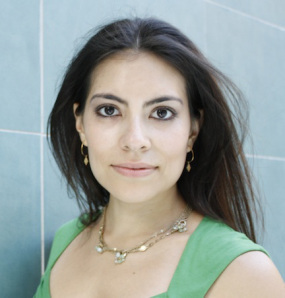 Born in Lima, Peru, Natalia Sylvester came to the U.S. at age four and grew up in South Florida, where she received a B.A. in Creative Writing from the University of Miami. A former magazine editor, she now works as a freelance writer in Texas. Her articles have appeared in Latina magazine, Writer’s Digest, The Writer, and NBCLatino.com. Chasing the Sun is her first novel.
Born in Lima, Peru, Natalia Sylvester came to the U.S. at age four and grew up in South Florida, where she received a B.A. in Creative Writing from the University of Miami. A former magazine editor, she now works as a freelance writer in Texas. Her articles have appeared in Latina magazine, Writer’s Digest, The Writer, and NBCLatino.com. Chasing the Sun is her first novel.
Website: www.nataliasylvester.com
Facebook: Facebook.com/nataliasylvesterauthor
Twitter: twitter.com/NataliaSylv








June 18, 2014
Guest Post: Four Reasons You Shouldn’t Try To Be Perfect by Author Kathryn Maeglin
 You heard it here first. I am a fan of writing horrible drafts. Not publishing them, not reading them, but the only way I can get from HERE to THERE and from THIS to THAT is to let go of any notion of perfectionism in writing. You know, the same philosophy I have with the laundry. That’s not to be said that I don’t polish my work to a shine in the end, the way I iron my clothes (yes I do, pretty much daily). But to get there I LET GO.
You heard it here first. I am a fan of writing horrible drafts. Not publishing them, not reading them, but the only way I can get from HERE to THERE and from THIS to THAT is to let go of any notion of perfectionism in writing. You know, the same philosophy I have with the laundry. That’s not to be said that I don’t polish my work to a shine in the end, the way I iron my clothes (yes I do, pretty much daily). But to get there I LET GO.
Today, author Kathryn Maeglin shares her thoughts on perfectionism as well as her Serenity Prayer for Perfectionists. Do you need to reform? Or do you have advice? Chime in below.
And please welcome Kathryn Maeglin to Women’s Fiction Writers.
Amy xo
Four Reasons You Shouldn’t Try To Be Perfect
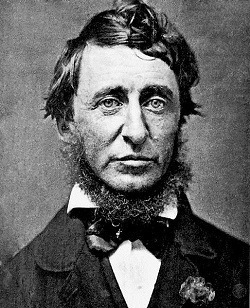 I was raised in a family of perfectionists, so it’s not surprising I ended up spending most of my journalism career as an editor. My perfectionism served me especially well when I was a copy editor. But as a novelist, perfectionism can be a major liability. Why? Because it slows . . . you . . . down.
I was raised in a family of perfectionists, so it’s not surprising I ended up spending most of my journalism career as an editor. My perfectionism served me especially well when I was a copy editor. But as a novelist, perfectionism can be a major liability. Why? Because it slows . . . you . . . down.
As Henry David Thoreau wrote back in the middle of the 19th century, “If thou art a writer, write as if thy time were short, for it is indeed short at the longest.” If Thoreau could see the publishing industry now, he might say, “Write as if thy publisher will dump thou if thou doth not pump books out fast enough.”
Now don’t get me wrong; I understand the value of slowing down enough to ensure you’re producing a top-quality product. But when you’re writing a scene where a character is eating yogurt in London, and you end up on the website of a British grocery store chain to make sure you use a brand name and flavor that actually exist, you’re being too fussy for your own good. Accuracy is essential for a journalist, but for a novelist, plausibility is your goal.
At a time when the marketplace is choked with competition like never before, it’s easy to fall into the trap of thinking your work has to be flawless before you can send it off. I saw a blog post by an agent who said your query and manuscript need to be “perfect” these days if you hope to have any chance of being traditionally published. I think there’s some truth to that since a manuscript that does everything right may stand out and will require less editing. But “perfect” and “excellent” are not the same thing.
Striving for perfection will drive you nuts. Trust me, I know because I struggle with it every day. I wish I had the perfect antidote to perfectionism, but I don’t. What I can share are a few of the strategies I’ve learned to combat the prissy proponents of perfectionism.
First of all, I came up with The Perfectionist’s Serenity Prayer:
God grant me the serenity to accept that I’ll never be perfect,
The courage to say “No” to my inner critic,
And the wisdom to know when my best is good enough.
As long as we writers are human, our work will never be perfect. When your creative juices are flowing free, don’t let your internal editor turn off the spigot. As Anne Lamott tells us in her fabulous book on writing, Bird by Bird, it’s okay to write shitty first drafts. You’ve probably heard the expression “Perfect is the enemy of good enough.” You know what? It is. Time to move on.
Secondly, recognize that fear is probably what’s driving your perfectionism: fear of failure, fear of success, fear of rejection, etc. Ask yourself what’s the worst thing that could happen if you don’t get something perfect. Worldwide famine? Nuclear apocalypse? The Nobel Prize in Literature will go to Snooki instead of you? When I push my fears to a ridiculous extreme, it reminds me how miniscule my concerns generally are. Just do the best you can, and if you don’t succeed this time, you’ll learn from the process and improve.
Third, try a sort of exposure therapy where you intentionally leave some things “imperfect.” Send an email to a friend without proofreading it. Resist looking up a word when you’re 90-percent sure of its meaning. Set a timer when you crack open your thesaurus, and if you haven’t found a better word after five minutes, go with what you’ve got. If you don’t waste time “perfecting” the less important things, you’ll have more time for polishing what does need extra attention.
Finally, there are books that can help. The Lamott book mentioned above has a whole chapter on perfectionism. If you’re someone who struggles with perfectionism in virtually every area of your life (join the club!), there’s a book I’ve found helpful titled When Perfect Isn’t Good Enough, by Martin M. Antony and Richard R. Swinson.
Now with the power vested in me by the fictitious Perfectionists Anonymous, I hereby grant you permission to be imperfect. Of course, you don’t need permission from me. You need it from yourself.
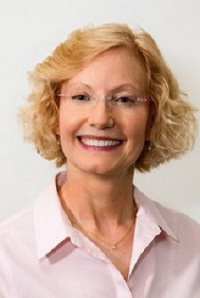
 Kathryn Maeglin started her writing career as an award-winning journalist. But after too many years of being constrained by the facts, she began writing fiction. Her goal is to write entertaining and meaningful stories women can relate to, and to have fun doing it. Soul Mate Publishing recently released the paperback edition of her first published novel, A Hunka Hunka Nursing Love. When she’s not writing, she’s reading, eating junk food, or hanging out with friends and family, and probably talking too much. She lives in the Midwest, is married, and has two overfed, underemployed cats.
Kathryn Maeglin started her writing career as an award-winning journalist. But after too many years of being constrained by the facts, she began writing fiction. Her goal is to write entertaining and meaningful stories women can relate to, and to have fun doing it. Soul Mate Publishing recently released the paperback edition of her first published novel, A Hunka Hunka Nursing Love. When she’s not writing, she’s reading, eating junk food, or hanging out with friends and family, and probably talking too much. She lives in the Midwest, is married, and has two overfed, underemployed cats.








June 16, 2014
How Many Dead Flowers Does It Take To Edit A Novel?
This is what editing looks like for me. I figure this is a service to aspiring authors and winsome readers who think writing novels is a pretty job. I mean, it started off that way with the crocheted blanket (circa 1992, made by my grandmother for my oldest when he was born), photos of my childhood street (the inspiration for my novel), the vase full of yellow blossoms, ample natural and artificial light, and a dog who lies on the bed and stares at me. The notebook on the floor is so that I remember to see it, which might not have happened if it was on the desk. It was there for days. The cups are coffee-scented reminders of days gone by. I rinse them when I remember, or when they become science experiments. I hate science.
And this, my friends, was two weeks ago.
So I’m sure you’ve surmised from the mess that IZZY is coming along great. The mess may be unbecoming but it’s not daunting to IZZY or me. I’m now fine-tuning IZZY into the character you all deserve to read about, with a story to match her wit, her troubles, and her resolve, and with secrets that will make you wonder what you really know about your own friends and family.
In addition to editing, I’m happy to say that winter has finally ended in Chicagoland. Although I’m definitely indoorsy, I have the potted herbs and hanging baskets to prove I have a bit of a green thumb, at least until it’s more than 100 degrees. Doing something besides editing—like gardening or exercising or driving or showering—always helps me work out a problem or issue with a scene or a sentence or a word choice.
As does snacking.
Red fish are a perk of the job. This writing gig is 24/7. IZZY and her cohorts are never far from my thoughts. My fingers are never far from a keyboard. Or SkinnyPop.
Editing a novel: it’s consuming, it’s enchanting, it’s hard work—it’s like rearranging your favorite furniture and then finding the room looks only a little different, but infinitely better.
Hope you’re enjoying summer! I’ll back with more IZZY news (like a new title, perhaps) as soon as I can be!
In the meantime, tell me: is someone’s character linked to the truths they tell, or to their lies?
Amy xo








June 15, 2014
The Glass Wives is $4.48 at BN.com
The BN.com book gods have a special offer for you! THE GLASS WIVES is a BAHGAN in paperback at $4.48 just in time for the beach, the pool, the plane, and all you early-bird Christmas shoppers! Ho! Ho! Ho!
You can order it and have it delivered or order it to pick up at your local BN. In that instance you can also get a snack.
Click here for more info!








June 4, 2014
Author Interview: Kellie Coates Gilbert Juggles Writing, Life, And A New Novel With Finesse, Wisdom, And Humor
 My friend, author Kellie Coates Gilbert, is here today to share with us her new novel, her theories on women’s fiction, and how she manages a full writing life and a full life in general and how she does it all so well.
My friend, author Kellie Coates Gilbert, is here today to share with us her new novel, her theories on women’s fiction, and how she manages a full writing life and a full life in general and how she does it all so well.
Please welcome Kellie Coates Gilbert to Women’s Fiction Writers!
Amy xo
Author Interview: Kellie Coates Gilbert Juggles Writing, Life, And A New Novel With Finesse, Wisdom, And Humor
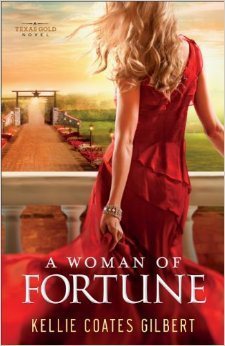 Amy: Welcome, Kellie! A WOMAN OF FORTUNE is your second novel—can you give a sneak peek into the story and tell us about the ‘spark’ that spurred you to write it?
Amy: Welcome, Kellie! A WOMAN OF FORTUNE is your second novel—can you give a sneak peek into the story and tell us about the ‘spark’ that spurred you to write it?
Kellie: Sure, Amy! Here’s the story blurb:
Texas socialite Claire Massey is living the dream—designer clothes, luxury cars, stunning homes. But her Neiman Marcus lifestyle comes crashing down when her charming cattle broker husband is arrested for fraud. Suddenly she finds herself facing attorneys, a media frenzy, and a trail of broken hearts. Betrayed and humiliated, Claire must start over against incredible odds to save her family—and discover a life worth living.
In late 2008, many of us watched as master financier Bernie Madoff’s story unfolded. I couldn’t seem to pull my eyes from the television as the man accused of swindling thousands of innocent victims—including family and friends—out of billions of dollars in the world’s largest Ponzi scheme, was taken from his posh Manhattan apartment in handcuffs and his family became vilified in the media. The events held particular interest for me. In my former role as a legal professional, I helped unravel, what was then, the largest cattle fraud in the United States. I interviewed dozens who were caught in the betrayal and who found themselves and their businesses floundering as a result. These stories fascinate me on many levels, but in particular, I’m intrigued with the families behind the scenes. What is it like for a wife to learn her husband is a criminal? What happens to children when they face that kind of shame? We know, at least in part, what transpired in the Madoff family in the aftermath—fractured relationships, family devastation and suicide. As a novelist, I yearned to explore what might happen if the converse were true. What would the story look like if a strong woman protagonist bucked the odds and used her faith to land on solid ground?
In my former career, I spent a lot of time in courtrooms working on high profile cases. People are often at their most vulnerable in these tense situations where much is at stake, and I gained a unique perspective on the human psyche. Early in my writing career, I recognized there could be value in telling stories about women facing relationship fractures, betrayal, and loss and what it looks like to exhibit strength and dignity in these journeys.
This story is particularly seeped with my legal background. As a legal investigator, I helped unravel the largest cattle fraud in the nation. I spent weeks in the Midwest interviewing and collecting records from farmers and ranchers who had invested with United Producers, a large cattle brokerage outfit. Ultimately, the owner George Young and his office assistant, Kathleen McConnell were imprisoned for many of the things you’ll see showcased in A WOMAN OF FORTUNE.
Amy: Your website says “Stories for moms, daughters, sisters, girlfriends…” We’re often the midst of some debate about whether women’s fiction is a label that negatively defines books by women, what’s your opinion of this? (As you might guess, the term doesn’t bother me, nor does writing books I believe will appeal to women, even though I realize there is a discrepancy as there is no men’s fiction.)
Kellie: I’m aware of the debates you reference. While I have no pat answers to some of the issues raised by authors who believe having their books labeled Women’s Fiction diminishes them in the marketplace, I think labels are often created so readers can find the stories they like to read. I make no apology that I write stories that primarily appeal to women, and if the label directs my audience to my books—well, that’s fine with me.
I also make no apology for adoring women’s fiction. I love what we write, Amy. My favorite books of all time are labeled women’s fiction and present stories about women and their relationships, stories with issues that can divert women from a path to fulfillment and happiness, and the strength and dignity it takes to prevail. The best books are the ones where I close the last page feeling changed, stories that leave me thinking about the characters and their choices—books that challenge my ideas about life and meaning.
Amy: You have a lot on your plate—more books coming out, you’re very active in WFWA (Women’s Fiction Writers Association), you’re a dedicated wife, mom, and grandma. Do you have a schedule, a to-do list? Seven to-do lists? How does it all get done so well?
Kellie: Ha, true! I juggle a lot of roles, and a considerable amount of work. In addition to being a career novelist, I own and manage two small businesses. To keep everything straight, I have a Franklin Planner….EVERYTHING goes in the planner. I even calendar my grocery shopping! I also keep a master task list on my Mac and print it regularly (and put it in the planner.)
A key to success is learning to say “no” to some things. I carefully prioritize my commitments and only accept new items on my “plate” that really matter. I treasure my relationships and I’m committed to keeping priorities straight—even when my task list gets very long!
You mention WFWA (Women’s Fiction Writer’s Association). It is such a pleasure to donate time to this start-up organization. The board members are top notch and work so hard to provide a community for published authors and authors seeking publication. The workshops are great (you recently taught a fabulous class on blogging to RAVE reviews) and the forums are a very popular tool for networking. We’re climbing on four hundred members strong.
Amy: When you’re ready to write a new story, what’s your pleasure — outlining or writing by the seat of your pants? Why do you think your chosen method works for you?
Kellie: Typically, my story ideas generate from a former case I’ve worked on or an item I see in the news. An idea ruminates until I’m nearly obsessed with the concept. That’s how I know I’ve come up with a storyline I could spend months writing.
About a year back, I discovered the writing tool SCRIVENER. I love this low cost writing software (I paid $40.) You can link to websites and I keep all my research there. I use the character profile sheets and store images of my characters and all the information about them as it develops.
Since I’m primarily a “pantser” I don’t work from detailed outlines, because that stifles my creativity. I do make a general outline of the major plot points and plan how my characters change over the course of the novel. I store scene ideas and keep a running outline of finished chapters, which I later use as the submission synopsis I turn in with my manuscript. I also keep an extensive timeline.
Amy: Without giving us any spoilers, what was the hardest scene for you to write in A WOMAN OF FORTUNE? What made it a challenge?
Kellie: Wow, Amy—I could answer this in multiple ways. Many of the scenes in A Woman of Fortune were very emotional for me. After thought, I’d have to say the hardest scene was the final one. I typed the last line with a huge lump in my throat. After spending months with Tuck and Claire Massey and their adult children, Garrett, Lainie and Max, after I’d journeyed with them through betrayal, felt their intense emotions as their world changed in unexpected ways, watched these people stumble and falter until they finally landed back on solid ground—I didn’t want to say goodbye.
Amy: What’s your best advice for aspiring and published authors going through transitions with their careers and even with their goals?
Kellie: I believe networking is critical—when your career is going as you hope, and especially when it isn’t. I’m a grateful member of an online group of women’s fiction authors which provides a safe and confidential place to share challenges, successes, support and answers to difficult questions. I treasure this community of authors and the knowledge base represented there. If an author isn’t a member of a similar gathering, I’d urge them to choose authors they respect and create one by starting a Facebook private group.
The other advice I’d give is this: Foster your public image carefully. Too often I see authors use social media to rant about the downside of this business, and nothing could be more foolish. Charlie Sheen and Lindsay Lohan probably look back at their marred careers and wish they’d used more caution. Authors are not immune and should use care to create and maintain a positive impression “out there.”
Your question about weathering the ups and downs of the publishing industry, that’s more difficult to address. We’re writing in a volatile time, with so many aspects of the industry making discoverability of our books harder to establish. Both you and I know very talented authors who are not in contracts right now. We know authors who have repositioned their careers and are publishing outside traditional avenues. And we’re all experiencing marketing demands crowding our writing time. No doubt, it’s tough to stay viable and succeed.
Last week, I was in New Orleans at the RT Booklovers Convention. Readers packed three huge hotels, some traveling from Paris, Germany and Australia. These reader fans lined up to meet favorite authors and bought stacks of books. I returned home with a very upbeat notion cemented in my mind—while the delivery method for providing books may morph in unexpected ways, there will always be avid readers. There will always be great writers of superb stories. That will never change.
Amy, thank you for hosting me on Women’s Fiction Writers blog. As you know, I loved The Glass Wives. You are a talented novelist and I’m so looking forward to your next release!
And, it’s true isn’t it? Creating and sharing women’s fiction with readers is as much fun as we thought it might be!
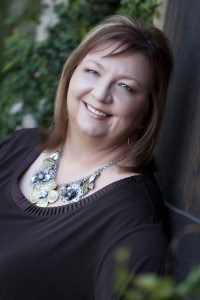 Kellie Coates Gilbert spent nearly twenty-five years working in courtrooms and behind the scenes of some of the largest and most well-known cases in America. Kellie was one of the lead paralegals in the Jack-in-the-Box litigation, where uncooked hamburger resulted in the deaths of several toddlers and made many more critically ill. In the late nineties, she investigated the nation’s largest cattle fraud, which is now the subplot of her soon-to-be-released A WOMAN OF FORTUNE from Baker Publishing/Revell. Her books not only explore the heart issues that matter most to women, but often allow readers an inside peek into her former legal world.
Kellie Coates Gilbert spent nearly twenty-five years working in courtrooms and behind the scenes of some of the largest and most well-known cases in America. Kellie was one of the lead paralegals in the Jack-in-the-Box litigation, where uncooked hamburger resulted in the deaths of several toddlers and made many more critically ill. In the late nineties, she investigated the nation’s largest cattle fraud, which is now the subplot of her soon-to-be-released A WOMAN OF FORTUNE from Baker Publishing/Revell. Her books not only explore the heart issues that matter most to women, but often allow readers an inside peek into her former legal world.
www.kelliecoatesgilbert.com
Twitter: @KCoatesGilbert
Facebook: Kellie Coates Gilbert
Pinterest: Kellie Coates Gilbert – Author








June 3, 2014
Guest Post: Mary Gottschalk Discusses The Difference Between Memoir Vs. Novel Writing (Other Than The Obvious!)
 I remember the first time I thought, “Hey, I’ll write a novel.” It was immediately followed by the thought, “What am I? Crazy?” I was steeped in the journalist world of who, what, where, when, and how; my writing life was comprised of truth, the whole truth, and nothing but the truth. I’m glad I took the leap even though the answer might still be that yes, I’m a little crazy.
I remember the first time I thought, “Hey, I’ll write a novel.” It was immediately followed by the thought, “What am I? Crazy?” I was steeped in the journalist world of who, what, where, when, and how; my writing life was comprised of truth, the whole truth, and nothing but the truth. I’m glad I took the leap even though the answer might still be that yes, I’m a little crazy.
Today, Mary Gottschalk shares with her experience of going from the idea of a memoir to that of a novel.
Please welcome Mary to Women’s Fiction Writers!
Amy xo
Memoir Vs. Novel: Training Wheels for Any Writer
by Mary Gottschalk
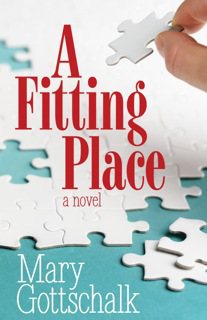 I am often asked which is the “better” vehicle—a memoir or a novel—for a story that has some basis in fact. As the author of both a memoir and a novel, I resist the notion that there’s a one-size-fits-all answer for the reader or the writer. What I do believe is that for a newbie writer, a memoir is a much better place to start.
I am often asked which is the “better” vehicle—a memoir or a novel—for a story that has some basis in fact. As the author of both a memoir and a novel, I resist the notion that there’s a one-size-fits-all answer for the reader or the writer. What I do believe is that for a newbie writer, a memoir is a much better place to start.
Unlike fiction, the outer boundaries of a memoir are defined before the first word hits the page. As a memoirist, you “know” where the story begins and where it ends, who the players are and what they’re like. As a memoirist, the number of your plot points and scenes are constrained by reality. Your job is to connect the dots, not make them up.
But getting the dots down on paper does not a memoir make. Knowing where the story begins and ends is not the same as having a strong story arc with identifiable turning points and scenes that propel the story forward. Knowing why your story matters is not the same as having a sympathetic protagonist that readers will care about, a protagonist with a clearly defined desire line that creates tension and keeps the reader turning the page. Knowing the players and their personalities is not the same as having complex and multi-dimensional characters whose strengths elicit our admiration and whose foibles gain our empathy.
In other words, a well-written memoir should read like fiction.
Learning the Writer-ly Craft
One advantage of starting your creative writing career as a memoirist is that, when you get it wrong in your first draft, you have fewer things to fix.
As a memoirist, you can’t change the trajectory of events, so you have to focus on doing a better job of building tension and establishing cause and effect within whatever storyline you have. You learn, by trial and error, which events move the story forward and how it feels when your story begins to unfold organically. You learn that ruthlessly cutting out events that serve no plot purpose can heighten the emotional truth of your story, with little damage to factual accuracy.
Similarly, as the author of a memoir, you can’t create new scenes or new characters out of whole cloth. All you can do is focus on re-writing those that are flat, on learning how to make them come alive, on using them more effectively to carry the plot forward. Your focus is on mastering the art of showing vs. telling, on finding the right balance between dialogue and narrative. You learn that what you don’t say often has as much dramatic potential as what you do say. Above all, you have some sense of what you’re aiming for as you try to repair a crippled story.
Learning to be a good writer is never easy, but it feels more manageable when you’re tackling a memoir than the bad first draft of a novel. With an infinite number of possible events, scenes and characters from which to choose, even an experienced writer can have trouble discerning whether a problem lies in the writing, in the story arc and structure, in the pace, in selection of characters, or some combination of them all. For a neophyte, sorting it out is all but impossible.
By the time I began my novel, I had some solid skills in constructing a story arc, both for the book as a whole and for each chapter along the way. I knew how to use dialogue and develop my characters through judicious use of scenes. I had a lot to learn, but completing the memoir gave me the confidence to attack one problem at a time, to avoid being overwhelmed by the enormity of the task.
Without the memoir, there never could have been a novel.
Finding Your Voice
Another advantage of starting with a memoir is that it is easier for a newly-minted author to find her “voice” in a memoir than in a novel.
As a voracious reader, I recognized “voice” when I saw it, but I certainly couldn’t define it. When I turned my hand to creative writing, I had no idea to find my own voice. That was hardly a surprise, as I’d spent many years as a writer in a business context, where I made a conscious effort to silence anything that might be considered a personal point of view.
Looking back, I’m convinced the dreariness of the first draft of my memoir was due in no small measure to the lack of a distinctive voice. But as I re-wrote and re-crafted and re-organized my story around situations I had lived through and people I knew well—as I got closer and closer to a story that read like fiction—my voice began to emerge.
Could that have happened if I’d started out with a novel, where all the elements—story arc, scenes, and characters—were potentially in flux? I doubt it.
Priming the Pump
Writer-ly skills are for naught unless you have something you want to write about.
The story behind my memoir—a mid-life coming-of-age experience after I left a successful career to sail around the world at age 40—had steeped in my brain for two decades before I put pen to paper. Not once, in all those years, did the possibility of writing a novel ever occur to me.
As the memoir unfolded and my voice emerged, however, I began to see that “the story” was much bigger than “my story.” Sailing on the open ocean was a metaphor for life: you can’t control your environment, the path is not well marked, and you often end up someplace other than where you set out to go. The lesson of that voyage, a lesson that changed my life, was that you learn the most when you step outside your comfort zone.
Suddenly I had a story with almost infinite variations. I itched to explore them. Voilà, my first novel.
It will not be my last.
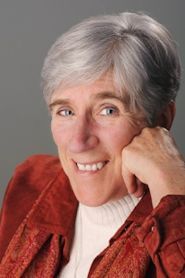 Mary has made a career out of changing careers.
Mary has made a career out of changing careers.
After finishing graduate school, she spent nearly thirty years in the financial markets, first in New York, then in New Zealand and Australia, eventually returning to the U.S.
Along the way, she dropped out several times. In the mid-80′s, at age 40, Mary and her husband Tom embarked on the three-year sailing voyage that is the subject of her memoir, SAILING DOWN THE MOONBEAM. When the voyage ended, she returned to her career in finance, but dropped out again to provide financial and strategic planning services to the nonprofit community.
In her latest incarnation, she is a full time writer. Her first novel, A FITTING PLACE, was released May 1, 2014.
A Fitting Place on Amazon (it is also available on iBooks): http://amzn.to/1m57778
Website: http://marycgottschalk.com
Twitter: http://twitter.com/marycgottschalk
Facebook: http://www.facebook.com/mary.gottschalk.9
Facebook: http://www.facebook.com/MaryGottschalkWriter
LinkedIn: http://www.linkedin.com/in/marygottschalk/
Google +: https://plus.google.com/u/0/105973496280247274228/posts








May 30, 2014
Author Linda Pennell Writes History Fiction, Embraces Social Media, And Laughs At Those Who Belittle Women’s Fiction
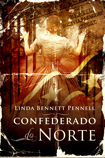 As an author of contemporary fiction, I always jump at the chance to ask questions of historical fiction authors. To me, the research process seems laborious and daunting—but to them, it drives the story and fuels their creativity. Today, author Linda Pennell shares with us a little of her inspiration, method, and how she combines her love of the past with the social media frenzy of today. I also love her attitude toward the scuttlebutt surrounding the women’s fiction label.
As an author of contemporary fiction, I always jump at the chance to ask questions of historical fiction authors. To me, the research process seems laborious and daunting—but to them, it drives the story and fuels their creativity. Today, author Linda Pennell shares with us a little of her inspiration, method, and how she combines her love of the past with the social media frenzy of today. I also love her attitude toward the scuttlebutt surrounding the women’s fiction label.
Please welcome Linda Pennell to Women’s Fiction Writers.
Amy xo
Author Linda Pennell Writes History Fiction, Embraces Social Media, And Laughs At Those Who Belittle Women’s Fiction
 Amy: As a writer of historical fiction, what drew you to the mid-nineteenth century, or these characters, for your novel?
Amy: As a writer of historical fiction, what drew you to the mid-nineteenth century, or these characters, for your novel?
Linda: Having studied history, I always knew that a few defeated Confederates chose to immigrate to Central and South America rather than live under Reconstruction. When I learned through a magazine article that their descendants can still be found in Americana, Brazil wearing Confederate gray uniforms and antebellum ball gowns and flying the Stars and Bars on festival days, I became fascinated by their story. I read the few published academic monographs on the subject and the information they contained set my imagination churning.
Amy: Can you tell us a little about your research and writing process and how the two were intertwined?
Linda: I have been in love with the past for as long as I can remember, so for me, the research comes first. When a topic, event, subject, historical figure, etc. piques my interest, I start with a Google search for books, magazine articles, and internet sites that provide accurate information. With Confederado do Norte, I found three academic monographs on the subject, two of which contained long quoted passages from primary sources such as diaries and journals kept by the real Confederados during their years in Brazil. I also found websites where additional primary material was presented. At some point during my research, the premise of a novel will form, sometimes popping into my head almost fully formed. Once the research is completed and the premise is formed, it’s just a matter of creating characters to tell the story. I consider myself a plotter with pantser tendencies because I do a rough, general outline of the whole story and maybe make some notes for important scenes, but everything else is created as I write. I love the spontaneity of the creative process!
Amy: With so many publishing options for authors today, what drew you to seek a small e-publisher like Soul Mate?
Linda: I met Debby Gilbert, Soul Mate founder and editor-in-chief, at a conference and we just clicked. Our backgrounds are very similar and we have so much in common. It just felt right. I wanted the support of a publisher rather than going it alone, so when the time came, Debby was the logical choice for my debut work of historical fiction, Al Capone at the Blanche Hotel. The Soul Mate family is one of the most supportive groups in my life. We help each other and cheer each other on. It’s a tough world out there. Who wouldn’t want that kind of experience?
Amy: What have you found the most effective social media or marketing tools? What are the least effective?
Linda: There are several ways to define effectiveness when it comes to social media, but I am going to assume that most of our readers are interested in what produces an uptick in sales. I can’t speak for everyone, but I have found that letting my Facebook friends and my circle of personal friends know about a release gets the ball rolling. My friends span many years and many types of activities including high school, college, volunteer groups, church, and my work colleagues. They have spread the word among their friends. I have gotten quite a few speaking engagements with book clubs this way. Speaking to book clubs is a joy and so much fun!
Another way to connect is via Twitter, but I cannot recommend it for marketing per se. Twitter is good simply to get your name out there. Eventually, it may pay off in sales, but I simply enjoy connecting with people with similar interests. I’m addicted to words of wisdom and great quotes about a variety of topics.
Finally, whether one has a blog of one’s own or makes guest appearances, blogging gets your name out, advertises your work, and puts your writing and personality on display. Not an opportunity to be missed! Whether to pay for a blog tour must be each author’s personal decision. I have seen just as much action from the guest spots I’ve done on friends’ blogs as I have from a paid tour.
Since time is a factor, I have not tried other social media. I’ve chosen what I can manage and have decided not to worry about the rest. After all, writing the next book needs to be an author’s first priority.
Amy: What’s your best advice for aspiring authors of women’s fiction?
Linda: Rejection is a painful, but necessary part of getting published. Do not be discouraged. Learn all you can about your craft, edit until your eyes cross and fingers bleed, join a reliable critique group, and write the book you would want to read. Presently, there is a debate in the industry about whether there should be a category labeled women’s fiction. There is concern that women are again being marginalized by an industry that historically favors male writers. That may be the case, but women are having the last laugh. We read more, buy more books, and support more literary causes. Be proud to call yourself an author of women’s fiction.
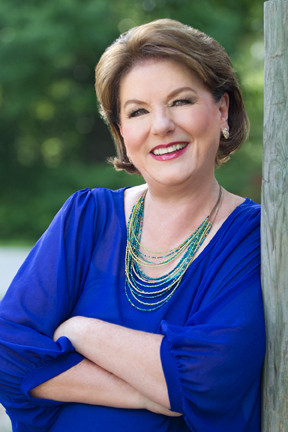 Linda Pennell resides in the Houston area with one sweet husband and one German Shorthaired Pointer who thinks she’s a little girl.
Linda Pennell resides in the Houston area with one sweet husband and one German Shorthaired Pointer who thinks she’s a little girl.
Al Capone at the Blanche Hotel now available from Soul Mate Publishing
Confederado do Norte coming from Soul Mate in 2014
Facebook: https://www.facebook.com/AuthorLindaBennettPennell
Website: http://www.lindapennell.com/
Twitter: @LindaPennell
Buy Al Capone at the Blanche Hotel: http://amzn.to/16qq3k5








May 25, 2014
How Editing A Novel Is Like Carrying A Big Purse
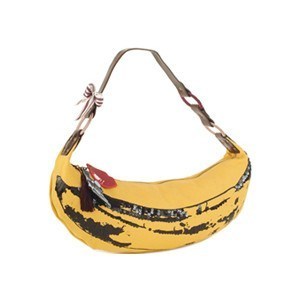
Either the answer to my prayers or a full blown nightmare. Not sure which.
I found a banana at the bottom of my purse. There was no smell, no recollection of a lost snack. I was just in there, elbow deep, rooting around for a tissue (didn’t have one), or maybe a lip gloss (always have two), and found fruit. I hadn’t even remembered putting it in there. Out it went. Obviously at some point I thought I needed a banana in my purse, likely an effort to stave off plummeting blood sugar on some lone suburban excursion. But when I found the banana I realized I hadn’t needed it when I thought I would — and there was no reason to save it. I had other awesome things in my purse (entire case of pens, mini hairbrush, four eyeglass cleaners, cinnamon Altoids—the best) and that I would never miss the banana. I also realized that if I wanted a banana, I could always get another one.
At the end of the week I received my edits for FINDING IZZY LANE, my next novel. Getting those pages in the mail in a big envelope with a St. Martin’s Press return address was the same kind of rush I get when I find that brand new perfect purse. Granted, a novel isn’t perfect (ever), but especially not in the revision stages. Yet, there is inherent, undeniable thrill in potential. Like with an empty purse.
When I was writing FINDING IZZY LANE I took a somewhat different approach from when I was writing THE GLASS WIVES. Frankly, that was easy, as my early drafts of THE GLASS WIVES had no real “approach.” This time, I followed advice from my editor (as much as I could). She had told me once that it’s easier to take things out than put things in—so instead of writing sparse, which is my inclination, I tried to fill things out as much as possible, knowing that I could go in later and pull out what I didn’t need or want. Like the banana! When in doubt, I often left things in this version of FINDING IZZY LANE, that I might have left out had I been writing THE GLASS WIVES. And while there are certainly places I need to fill out and bump up in FINDING IZZY LANE, I am comfortable with the decision of what I left in initially. I thought I might need them, so they stayed. Now they’ll go. I believe they also gave my editor, and her assistant (who is awesome), a keen insight into the story and characters, even if some of the passages or scenes will be deleted or changed or moved around.
And that’s also like carrying a big purse, or even a small one (I have many of each). I have to make sure that my phone is easily accessible, and that a few key cosmetics are grabbable. I move things between pockets inside and out, check to make sure the key is where it needs to be. Doesn’t matter if it’s a wristlet or a satchel, I’m a huge re-arranger.
When I’m writing, I think I know the whole story I’m writing but not necessarily the order in which it should be told. I am a cut-and-paste diva, just like in the olden days of my career in PR, I would literally cut and paste columns of copy to layout newsletters and brochures. I had a keen eye for being able to make everything fit and an uncanny knack for writing headlines that precisely spanned their allotted widths (thank you, Temple University Journalism degree). Nowadays, there’s no printing out and no rubber cement, but I still clip and maneuver sections to fit—but within the context of the story instead of on the page (that comes later, with page proofs).
And if there is something that comes out of FINDING IZZY LANE that needs to go back in, that’s possible too. Unlike old bananas, I save deleted lines and scenes. But like a banana, if I wait just long enough, I might go back and find that they stink.
I’m excited to get started polishing FINDING IZZY LANE. For the next long while it will be like that brand new purse I now carry every day, breaking it in, making it mine, having it feel like an old friend.
Yes, I love me my purses. And after a healthy time away, I’m loving FINDING IZZY LANE. Even if it was the merging of the two ideas that reminded me most people don’t pull a banana out of their purse and think, “OH MY GAWD. THIS IS JUST LIKE EDITING.”
Welcome back to my world, folks. We’re in for a wild ride.
Amy xo
Want to read a bit about FINDING IZZY LANE? Click here.
Want to see my FINDING IZZY LANE Pinterest board, complete with what I call, Iz-pirational quotes? Click here.








May 14, 2014
Guest Post: Author Anne McCarthy Strauss Says Sometimes Dreams Come True Later Than We Think
 Journeys to publication are always inspiring—so please welcome Anne McCarthy Strauss as she shares her own, as well as solid and heartfelt advice, on Women’s Fiction Writers today.
Journeys to publication are always inspiring—so please welcome Anne McCarthy Strauss as she shares her own, as well as solid and heartfelt advice, on Women’s Fiction Writers today.
Amy xo
Sometimes Dreams Come True Later Than We Think
by Anne McCarthy Strauss
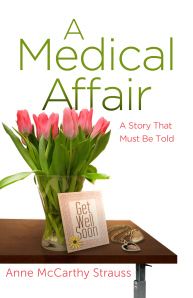 In 1970, Richard Boles wrote, What Color is Your Parachute?, a guide for job seekers, a book so popular that it has been revised every year since 1975. Although a terrific book, I could never understand the need for it and for countless other career guidance books. I’ve known I wanted to be a writer since my parents read me my first fairy tales. What could be better than creating characters with all their nuances, thoughts, hopes and dreams and placing them in stories that would take readers to places they’d never otherwise have gone?
In 1970, Richard Boles wrote, What Color is Your Parachute?, a guide for job seekers, a book so popular that it has been revised every year since 1975. Although a terrific book, I could never understand the need for it and for countless other career guidance books. I’ve known I wanted to be a writer since my parents read me my first fairy tales. What could be better than creating characters with all their nuances, thoughts, hopes and dreams and placing them in stories that would take readers to places they’d never otherwise have gone?
Throughout my school years, I loved to read and, unlike most of my peers, I loved to write term papers and essays. The less I knew about the topic, the better, because it gave me the opportunity to do research. Even back in the days when research was performed on microfiche at the local library, it was next only to writing on my favorites list.
I wrote my first “newspaper,” The Princeton Street News, when I was seven. I wrote of the comings and goings of the people who lived on the street where I grew up. Headlines included, “The 6:15,” a piece about my mother’s evening excursions to pick my father up at the train station when he returned from work in New York City, and “Nine O’clock Mass,” an article about how the family across the street piled into their wood-sided station wagon every Sunday morning and headed to the local Catholic church. Each of the female members wore a black mantilla, secured to her head with a bobby pin.
Later, I was a regular contributor to my high school and college newspapers. But I longed for the day when I could put my writing focus on creative writing instead of non-fiction. Then, I’d be able to create my own facts and express them in the voices of my characters. Fantasy, fiction and fairytale were in my future, and doing anything else for a living never crossed my mind.
Always the realist, I majored in Journalism in college, backing it up with credits in creative writing courses. I knew you could get a real job with a steady paycheck working for a newspaper. Work in the creative writing field was more elusive and almost exclusively freelance in nature. I expected to marry a man with a good job after college who would support me while I wrote Great American Novels and raised his children.
But, as it does for most of us, real life intervened with my expectations, and I found myself the single mother of a baby boy at the tender age of 25. I had an excellent job in public relations, a field that allowed me to write such missives as press releases, articles for trade magazines, white papers and sales proposals. It certainly wasn’t what I wanted to write, but at least I was writing.
During sixteen years as a single mother, I managed to eke out two novels, written on weekends and at night while my son was asleep. I marketed them to agents and, although I came close to getting agent representation, almost getting an agent is akin to being a little bit pregnant.
Eventually I married and my son went off to college. Through reading, research and intimate chats with other women, I became aware of a problem that is epidemic in our country. The problem is medical doctors who have affairs with their female patients. The more I asked women if they knew of anyone who had ever experienced such an episode, let alone experienced one herself, the more enraged I became. What I learned was that nobody talks about it, but it happens all the time. Indignant at the thought of yet another professional (think teachers, priests, etc.) taking advantage of someone he’s tasked with caring for, I was fueled to finally write the book that would have the fire it needed to be published.
A Medical Affair took six years of research, writing and editing to be completed. But it was accepted by the second agent I sent it to.
Although it took me far longer than I’d hoped to achieve publication, I know I am in fantastic company. Just two of the many thousands of writers who achieved great success after multiple rejections are Anne Frank and Agatha Christie.
Anne Frank’s The Diary of a Young Girl was rejected sixteen times before becoming one of the best-known holocaust stories and selling 30 million copies around the world. Agatha Christie endured over 500 rejections spanning just four years, before landing a publishing deal for her first book, The Mysterious Affair at Styles, and launching a brilliant writing career.
As an author who was published after decades of trying, I feel qualified to suggest just a little advice to struggling writers. It is this:
Hold onto your dreams and continue to work toward them. Sometimes dreams come true later than we think.
Unless the subject fuels your emotions, don’t expect it to fuel those of your readers.
Let the words of the Rolling Stone’s Ruby Tuesday be your mantra as they are mine. “Lose your dreams and you will lose your mind.”
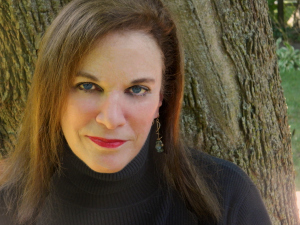 Anne McCarthy Strauss lives on Long Island, New York with her husband, Mel, and their two Cavalier King Charles spaniels, Cookie and Ollie. She is proud to be a native New Yorker who never left town. Anne invites her readers, other authors, and prospective readers and authors to email her at annemstrauss@gmail.com and to visit her website at http://www.annestrauss.com.
Anne McCarthy Strauss lives on Long Island, New York with her husband, Mel, and their two Cavalier King Charles spaniels, Cookie and Ollie. She is proud to be a native New Yorker who never left town. Anne invites her readers, other authors, and prospective readers and authors to email her at annemstrauss@gmail.com and to visit her website at http://www.annestrauss.com.
Facebook: https://www.facebook.com/pages/A-Medical-Affair/351712871626125
Twitter: https://twitter.com/annestr
Goodreads: https://www.goodreads.com/book/show/18962046-a-medical-affair?from_search=true
A Medical Affair on Amazon: http://www.amazon.com/Medical-Affair-Anne-McCarthy-Strauss/dp/162015174X/ref=sr_1_1_bnp_1_pap?ie=UTF8&qid=1388527945&sr=8-1&keywords=a+medical+affair
A Medical Affair on Barnes and Noble: http://www.barnesandnoble.com/w/a-medical-affair-anne-mccarthy-strauss/1117005363?ean=9781620151747&itm=1&usri=a+medical+affair


May 13, 2014
Guest Post by Author Kaira Rouda: Author Branding And The Real You
 Today I’m happy to share great advice from author Kaira Rouda. She’s a marketing pro and author with some simple yet essential reminders about author branding and being who you are. Being real. Thank you, Kaira, it’s something we need to hear again and again!
Today I’m happy to share great advice from author Kaira Rouda. She’s a marketing pro and author with some simple yet essential reminders about author branding and being who you are. Being real. Thank you, Kaira, it’s something we need to hear again and again!
Please welcome Kaira to WFW!
Amy xo
Be you. Be real. Know yourself and your brand and the rest will follow.
By Kaira Rouda
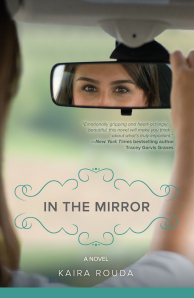 During my 20-plus years in the marketing world I learned quite a few truisms that apply whether you’re in an owner of a carpet cleaning business or selling real estate or selling books. For people to believe in you and your brand, it has to stand for something real. Something genuine. It needs to stem from the real you. I never imagined my first book would be a nonfiction business book for women entrepreneurs. But that’s how life worked out and Real You Incorporated: 8 Essentials for Women Entrepreneurs (Wiley) was published. Suddenly I was touring the country, speaking to huge gatherings of women – sometimes in the thousands – which was of course, for a shy writer, the most horrible of situations. I was on national television, terrified and usually with big hair. But I grew. I grew into what I wrote. Because what I wrote is true and I continue to receive amazing notes from women thanking me for inspiring them to start their own businesses.
During my 20-plus years in the marketing world I learned quite a few truisms that apply whether you’re in an owner of a carpet cleaning business or selling real estate or selling books. For people to believe in you and your brand, it has to stand for something real. Something genuine. It needs to stem from the real you. I never imagined my first book would be a nonfiction business book for women entrepreneurs. But that’s how life worked out and Real You Incorporated: 8 Essentials for Women Entrepreneurs (Wiley) was published. Suddenly I was touring the country, speaking to huge gatherings of women – sometimes in the thousands – which was of course, for a shy writer, the most horrible of situations. I was on national television, terrified and usually with big hair. But I grew. I grew into what I wrote. Because what I wrote is true and I continue to receive amazing notes from women thanking me for inspiring them to start their own businesses.
And as I read each note, or made another speech, I realized something else. I wasn’t being true to my own brand, my own dreams. You see, my own Real You chart wasn’t included in the book for a reason. I hadn’t lived it yet.
But I am now. After years of rejections, five different agents, numerous publisher committees, so many extenuating circumstances, and six plus manuscripts, I decided to go for it. That was in 2010. And when Here, Home, Hope, my debut novel was published by Greenleaf Book Group, the real me began to shine.
The most important thing I’ve learned in my author journey thus far – and as I noted it has been quite a long one, long before Here, Home, Hope appeared – is that this industry is, was and always will be fickle. That now, more than ever, it is fraught with change, confusion and consolidation. Ironically, there are so many parallels to the real estate industry in the year 2000, an industry I spent 10 years in.
Because of this holistic industry change driven by the internet, you must, as a writer, stay true to yourself. You need to know your personal brand and your writing brand and stick to it. I’m not talking genre as many successful authors today publish cross-genre with success. What I’m talking about is focusing on what you want to write, what feels right to you. It really doesn’t matter if “she” hit it big with a self-pubbed eBook, or a two-book big publisher deal. What matters is what you’re doing right now, and taking the time to define your personal brand. (If you need help with that, I have a bunch of information on my website and of course, in my book Real You Incorporated. If you haven’t done a personal brand audit in awhile, it might be time.)
Focusing on other people’s success, trying to figure out another author’s strategies or position, or harvesting other authors’ contacts and connections will backfire in the end because the truth will out. The world is transparent these days and you must be real. In what you write, in how you interact – personally and virtually.
And please do remember, especially if you are riding high on a new contract or a finished manuscript, an enthusiastic agent or a bestseller list, you were once where so many others are now. And you could be there again. Humility and kindness are such wonderful attributes and I personally find them in abundance in this writing community. Be sure you’re adding your kindness when you are riding high – as you’ll need it sometime in the future when the inevitable low comes. It will. But that’s Ok, too.
Because if you’ve been true to your personal brand, written what you know in the best way you can, and genuinely positioned yourself within this amazing writers community, well then, my friend, we’ll all be there for you when you need it.
Enjoy this exciting time in the publishing industry, and remember to be real.
My latest novel, In the Mirror is the story of Jennifer Benson, a woman who seems to have it all. Diagnosed with cancer, she enters an experimental treatment facility to tackle her disease the same way she tackled her life – head on. But while she’s busy fighting for a cure, running her business, planning a party, staying connected with her kids, and trying to keep her sanity, she ignores her own intuition and warnings from others and reignites an old relationship best left behind.
If you knew you might die, what choices would you make? How would it affect your marriage? How would you live each day? And how would you say no to the one who got away?
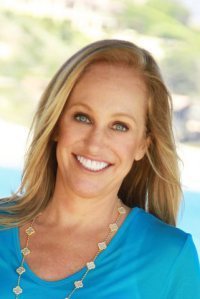 Kaira Rouda is an award-winning entrepreneur and author of both fiction and nonfiction. Her books include: Real You Incorporated: 8 Essentials for Women Entrepreneurs; Here, Home, Hope; All the Difference; In the Mirror, and the short story, A Mother’s Day. She lives in Southern California with her husband and kids and is at work on her next novel. Connect with her on Twitter, @KairaRouda, and on Facebook at Kaira Rouda Books. And of course, on Pinterest! For more about Kaira and her books, please visit her website KairaRouda.com.
Kaira Rouda is an award-winning entrepreneur and author of both fiction and nonfiction. Her books include: Real You Incorporated: 8 Essentials for Women Entrepreneurs; Here, Home, Hope; All the Difference; In the Mirror, and the short story, A Mother’s Day. She lives in Southern California with her husband and kids and is at work on her next novel. Connect with her on Twitter, @KairaRouda, and on Facebook at Kaira Rouda Books. And of course, on Pinterest! For more about Kaira and her books, please visit her website KairaRouda.com.


Women's Fiction Writers
- Amy Sue Nathan's profile
- 543 followers




